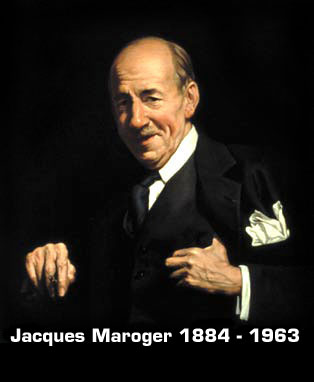 |
|||||||||||||||||||||||
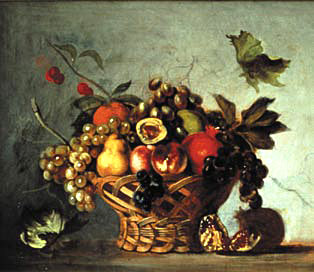 |
|||||||||||||||||||||||
|
Basket of Fruit, oil on panel, 20x24
|
|||||||||||||||||||||||
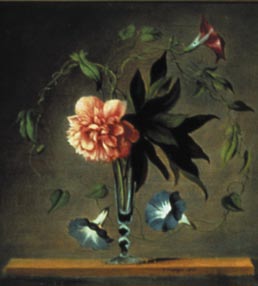 |
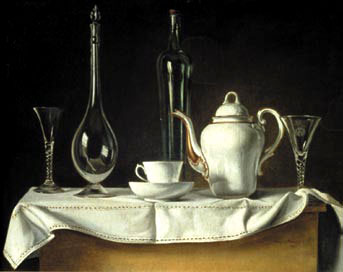 |
||||||||||||||||||||||
|
Coffee and Wine, oil on canvas, 34x44
|
|||||||||||||||||||||||
|
Peony and Morning Glories, oil on panel, 15 1/4 x 16
|
|||||||||||||||||||||||
|
|
|||||||||||||||||||||||
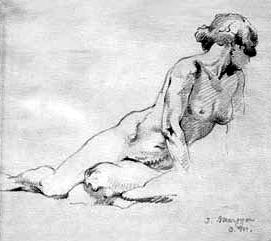 |
|||||||||||||||||||||||
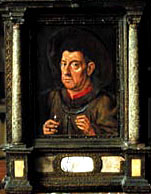 |
|||||||||||||||||||||||
|
Copy of Northern Master,
Oil on panel |
|||||||||||||||||||||||
|
Two Drawings of Nude
|
|||||||||||||||||||||||
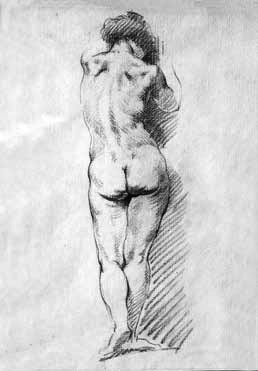 |
|||||||||||||||||||||||
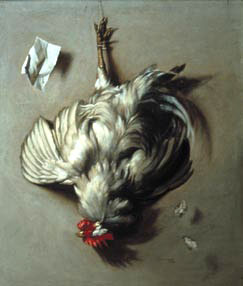 |
|||||||||||||||||||||||
|
Coq Blanc, oil on canvas, 40x32,
|
|||||||||||||||||||||||
|
|
|||||||||||||||||||||||
|
As a young man in Paris, Jacques Maroger first studied with the well-known portrait painter Jacques-Emile Blanche. Realizing Maroger’s interest in the painting qualities of the old masters, Blancherecommended that he study with Louis Anquetin, who had abandoned the modern movement and was devoting his time and career to trying to rediscover the lost techniques of the masters. In Blanche’s autobiography, he mentions that he tried Anquetin’s glazing method, but gave it up after the first try, finding it incompatible with the way he was accustomed to painting. Maroger entered the Anquetin studio in 1907. To test Maroger’s aptitude, Anquetin sent him to the Louvre Museum to copy a portion of a Peter Paul Rubens painting. When Maroger’s attempt failed, Anquetin stated, “There you are! None of us know how to do it. The knowledge of how has been completely lost!” Anquetin accepted Maroger into his studio and invited him to help with his on going research andexperiments. This was the beginning of a lifelong collaboration between the two artists. The paintings that hung in the museums had been retouched and were covered with layers of yellow varnish that made them difficult to read. Anquetin had erroneously seen the several coats of varnish as oil glazes. To avoid Anquetin’s initial error, Maroger entered the field of restoration in order to surround himself with works, or fragments of works, that had escaped retouching and varnishing. Eventually, his switch to the field of restoration paid off. After a few years, Maroger was appointed technical director of the Laboratory of the Louvre Museum and president of the Restorers of France. With first hand knowledge from the actual old master paintings and his continued research, he came upon his first medium in 1929. He was credited with the rediscovery of the first oil painting medium of the 14th-century Flemish artist, Jan van Eyck. Maroger offered his new discovery to his friend and mentor, Anquetin. Anquetin enthusiastically responded with a letter dated 1930. The following are excerpts from the letter, translated from French to English by Maroger’s wife, Olga Maroger. Sebastopol My dear old friend, Anquetin Maroger’s initial discovery was published by the British Academy of Science in 1931, arousing the interest of critic Roger Fry, who invited Maroger to give a painting demonstration. Below are excerpts from a letter to Maroger from Fry. 48 Bernard Street, Dear Mr. Maroger, Sincerely yours, A number of English artists, among them Augustus John, became enthusiastic users of this new medium. The following excerpts are from a 1933 letter to Maroger from John. Freyern Court nr. Fordingbridge, Salisbury Saturday My dear Maroger,Today I tried the new medium, which arrived this morning. I am enchanted with it. I made a study of which I am pleased and would like to show it to you. . . .I do not know why, but the new medium seems to be better than the other, which astonishes me. Oh! Why did I not have that 20 years ago. My dear friend in any case you are saving my life! . . . Come here when you have time. All yours, Augustus John In 1937, when Raoul Dufy was commissioned to paint a mural, measuring 36 feet by 220 feet, of L’Histoire de l’Électricité for the Paris World Fair, he used Maroger as his technical advisor and executed the mural in Maroger’s medium. Dufy sent Maroger the following letter, translated from French by Olga Maroger. Paris My dear Maroger, I just learned that the jury of the Exposition has bestowed to me one of the highest awards for my painting of the History of Electricity. I am happy to tell you of this good news as you know what a great part you must take of this award . . .You are opening a new era to the world of painting, and in the name of all painters I thank you from the bottom of my heart. With affection and friendship I remain yours, Raoul Dufy Later that year, Maroger was awarded the Legion of Honor for his contribution. Maroger’s immigration to the United States was very much influenced by Alice Warder Garrett, the American art patron and mistress of Evergreen House in Baltimore. Their relationship spanned more than two decades. Garrett was Maroger’s friend, patron, and student. Garrett probably met Maroger by 1934. She lived in Paris from 1914 through 1937 while her husband John Work Garrett was a special agent to the State Department in charge of civilian prisoners of war. She returned to Paris in 1934 after her husband had completed his post as ambassador to Italy. Maroger arrived in New York in 1939 and took a teaching position at the Parsons School of Design. The following year, Alice Garrett invited him to her home in Baltimore where she introduced him to Hans Schuler Sr., then president of the Maryland Institute of Art. Schuler hired Maroger to teach at the Institute, where he remained until 1959. Maroger was well-known for his rediscovery of the mediums of Jan Van Eyck and other Flemish and Italian master painters long before his research was published in 1948 in his book, The Secret Formulas and Techniques of the Masters, and his strong feelings about the proper training of young artists was equally well-known. As Maroger began giving his Institute students an intensive training in anatomy, drawing, portraiture, and still-life painting, combined with training in how to grind pigments, hand press linseed oil, and make medium, he also began dreaming about the development of an American school of painting grounded in that knowledge. The first to join Maroger, initially as a pupil and then as an assistant, was Ann Didusch Schuler, who remained throughout his 19 years at the Maryland Institute. Just after World War II, in 1946, a number of talented students started to arrive in the Maroger class. Among them were Frank Redelius, Earl Hofmann, Lewis Sears, Evan Kheen, John Bannon, and Joseph Sheppard. They became the original Maroger group and exhibited together at the Grand Central Art Galleries in New York. “Basket of Fruit” oil on panel, 20x24Maroger “Coffee and Wine” oil on canvas, 34x44“What I really consider to be most significant result of my researches has been the reconstruction of a medium which the artist who tries it will find corresponds, brush in hand, in all respects (dexterity and genius aside) to that of Rubens. But if time should not prove me to be entirely right in all my conclusions, I know that the essential principlesdiscovered will at least provide a proper basis forfurther adaptation and discovery on the same lines.”Jacques Maroger from his bookThe Secret Formulas and Techniques of the Masters Studio Publications Inc.NY and London 1948••Reginald Marsh, Maroger’s friend and new convert to the Maroger medium, also on occasion would show his work in support of the group. After visiting Maroger in Baltimore and staying at Garrett’s Evergreen House, Marsh thanked her for her hospitality and also “for the great aid you have given a movement that is sound but not à la mode. This new medium of Maroger’s is certainly the greatest gift to the technique of oil painting. I’m going to stick with it.” By 1959, partly as a reflection of the turbulent changes in the art world, Maroger was forced to leave the Maryland Institute, which was being led in a variety of directions by a succession of short-lived presidents. Garrett had died, and Maroger and his wife, Olga, were then living on the Garrett Estate in her former studio. A few years later, Maroger’s assistant, Ann Schuler, and her husband, Hans Schuler Jr., also left their teaching positions at the Institute and started an independent school of their own called the Schuler School. Maroger died while dictating a new book on techniques in the Garrett studio at Evergreen House on June 28, 1962. |
|||||||||||||||||||||||